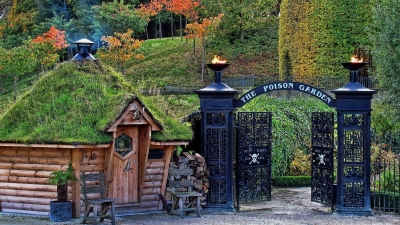
The Poison Garden at England’s Alnwick Garden is home to around 100 toxic plants. Entry to this space is allowed only through guided tours.
A stroll through a garden is highly refreshing. But do you dare to visit the Poison Garden in England wherein the visitors are explicitly told not to touch, taste or smell the flowers? The sign on the black iron gate says: These plants can kill, and is emblazoned with a skull and crossbones warming.
The deadliest garden was established in 2005 by Jane Percy, Duchess of Northumberland, who decided to have a poison garden instead of a herb garden. She established the garden intending to educate students about the hazards of hazardous and illegal substances specifically the kinds of compounds these plants produce The Poison Garden at the Alnwick Garden in Northumberland is home to around 100 toxic, intoxicating and narcotic plants. Some of these plants are grown in cages. One of the dangerous plants cultivated here is monkshood, or wolf’s bane, which contains aconitine, a neurotoxin, and cardiotoxin. However, this is not the worst one. The ganten also has ricin, better known as castor bean or castor oil plant, which according to Guinness World Records is the world’s most poisonous plant. Surprisingly, many poisonous plants grown in the garden are quite common such as rhododendrons whose leaves contain grayanotoxin which will attack a person’s nervous system if eaten.
Entry to the garden is allowed only through guided tours. Before the visitors are allowed to enter, they are given a safety briefing, warning them against touching, tasting, or smelling anything.
Despite all precautions, the visitors have fainted occasionally from inhaling the toxic fumes of the poisonous plants, the garden website notes. The staff at the Poison Garden is mandated by law to meticulously monitor, count, and file reports on their plants.
The authorities also have to submit proof that they’ve destroyed them at the end of every season.
Picture Credit : Google

